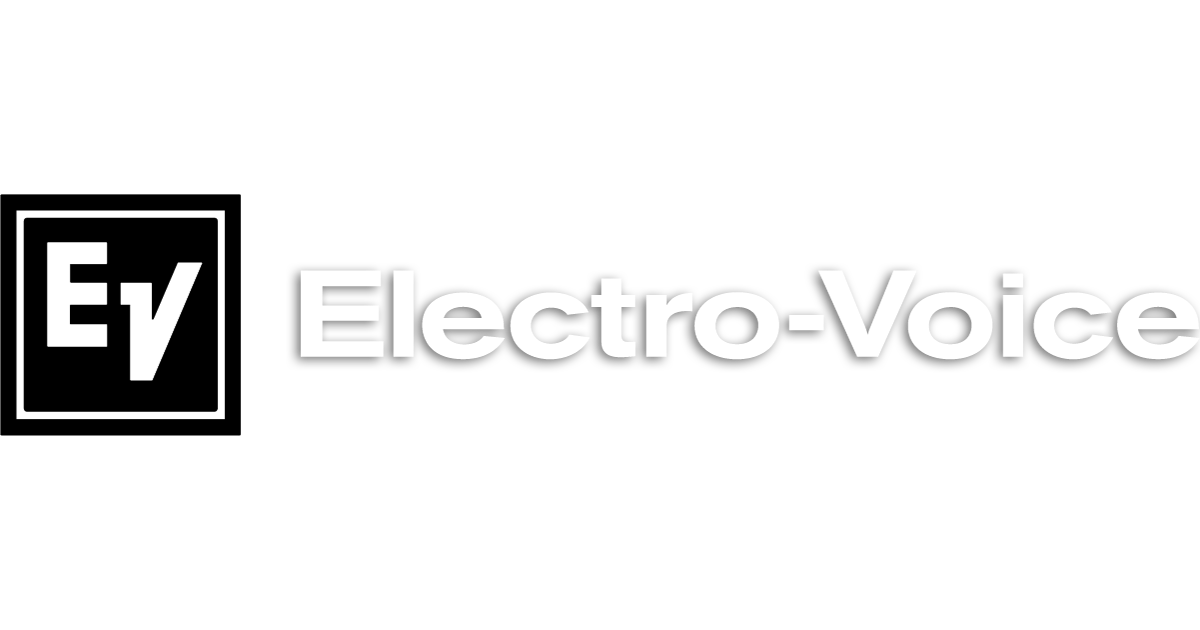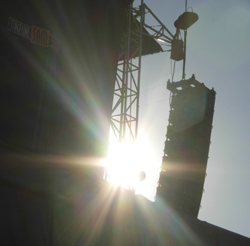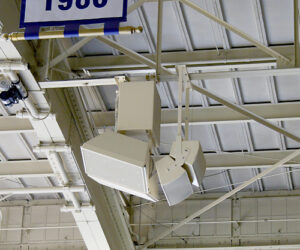This installment of Real World Gear presents a look at “Medium Format,” defined as modular enclosures designed around 8- and 10-inch low-frequency drivers.
The use of line arrays in smaller venues is often limited by weight and height. Compact enclosures are not only less expensive, but also weigh less and can bend more rapidly without breaking their coupling, due to the smaller diameter of their woofers.
The physics of coupling dictates a limit to the angle from one enclosure to the next, beyond which beaming and spotty coverage occurs. While a line array with 15-inch woofers has a limit of about 5 degrees, enclosures based on 10-inch cones can bend by 10 degrees, and those with 8-inch woofers can bend by 12 degrees from one cabinet to the next.
Smaller format line arrays can therefore provide a greater angle of vertical coverage in a shorter height, especially important in smaller venues.
On the other hand, line arrays lose pattern control at frequencies whose wavelengths are longer than the array’s height. To provide pattern control down to 100 Hz, for example, an array must be 11 feet tall and, with a typical cabinet height of a foot or less, control down to 100 Hz requires 11 or more cabinets in an array.
Hanging half a line array provides omni-directional low-frequency coverage that creates both a puddle of mud on stage and thin-sounding response at the back of the listening area, often where the mix position is located.
Most manufacturers provide companion subwoofers to achieve sufficient low-frequency extension for musical applications, which can become the top-most element in a flown array when there’s sufficient height, or can be flown adjacent or behind line array elements.
Subs that integrate into the bottom of a ground-stacked array provide additional height as well as supplying mass for stability, especially important when the array must bend back to address elevated listening areas.
There are several configurations. Some employ dual woofers with a center high-frequency section to provide horizontal symmetry. The simplest two-way systems simply employ a single cone driver and a high-frequency driver.
Quasi-three-way solutions use dual woofers, but roll off one woofer early so the other is the only source of mid-range, eliminating cancellations from the other. True three-way designs operate separate low-, mid- and high-frequency drivers in their own bands.
Medium Format represents the largest market for line arrays, whether in performing arts centers, worship facilities, ballrooms, convention centers or auditoriums. While the big guns are needed for arena rock and sports stadiums, there are endless opportunities to sell, rent, design, install, optimize and mix on compact line arrays.
In our Photo Gallery tour of the Medium Format genre, we include more than 30 manufacturers, but there are dozens more that haven’t made it across the pond yet.
With so much competition in this category, there are many high-quality compact line array products from which to choose.
Mark Frink is Associate Editor for Live Sound International. Reach him at [email protected].
















